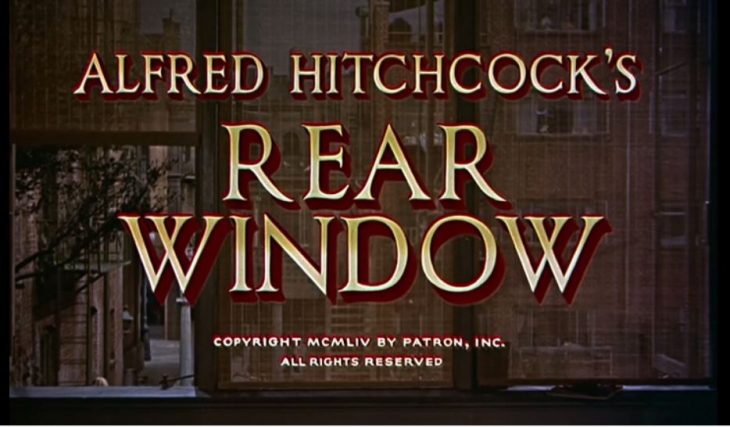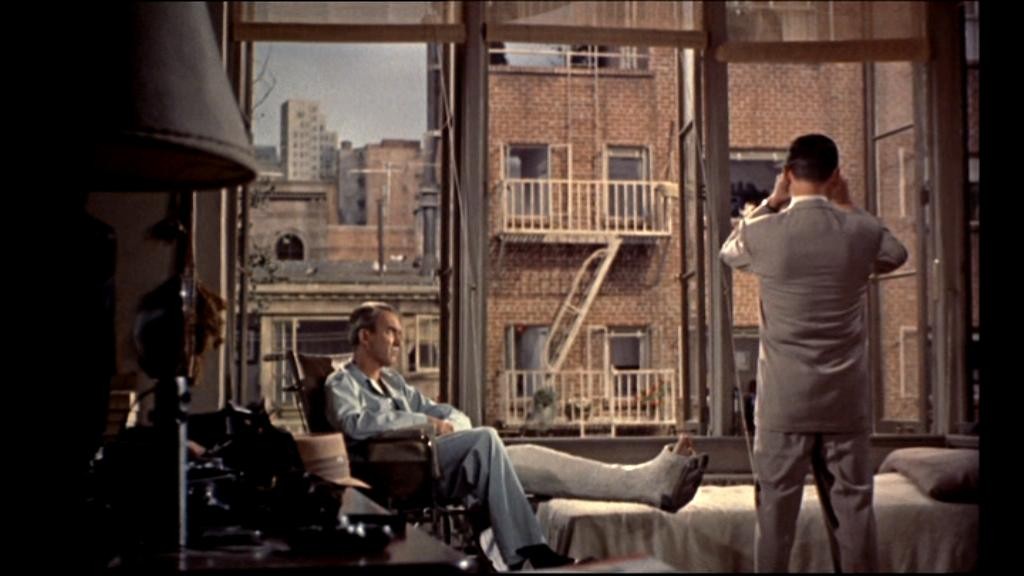
It Had to Be a Rear Window
Rear Window is a mystery thriller film based on the short story “It Had to Be Murder” by Cornell Woolrich. The short story, written in 1942, is expounded upon in Alfred Hitchcock’s 1954 adaptation as the protagonist, L. B. Jeffries, has many more neighbors to watch than in the story and two people visit him in his house, rather than just Sam, the houseman. While many elements were changed from short story to film and each had varying importance, there was one part of the story that didn’t change from page to screen at all which was, personally, the most well-written and well-filmed element by Woolrich and Hitchcock: the rear window.
I don’t simply mean that the window was any better or different from a window you’d find in your house today, and even if you could time travel back to the 1940s or ‘50s and look through a window then, there would be nothing particularly special to set it apart from any other window. What struck me as the most powerful element of Woolrich’s story, which Hitchcock brilliantly held onto, was the unchanging setting of Jeffries’s house, more importantly, his window/bed area. While the film shows him slightly more mobile, the short story describes Jeffries being able to get only from his window to his bed and vice versa, quickly painting the scenario of an injured man with little to do but watch his neighbors through his window. The readers and audience, though, are placed in the same restricted position as Jeffries whether they notice it or not: the whole story is told from that room because Jeffries never leaves his house. We then experience the story unfolding through the same limited perspective that our protagonist does, but not only in the first-person narrative point of view that Woolrich writes the story in. Rather, “It Had to Be Murder” and Rear Window physically place the reader and audience in the room with Jeffries, and we are limited to not only his lens, but the window’s lens.

While this may seem somewhat simple a revelation to have, the concreteness of location in the story make it that much more real and relatable. Of the earliest memories I have, the most memorable one is not of a person or event, but the large living room of my childhood home in which they take place. The ceiling came to a tall peak in the middle (it must have been twenty feet at its highest, though realistically was probably only twelve or so) and had windows across the back walls that overlooked the hill of our backyard. Yes, there was a literal rear window, with a similar feel to how the bay window Jeffries had must have felt, short of interesting neighbors to watch. Many of my early childhood memories are attached to that room, such as my family getting Christmas trees that asked my dad to climb a ladder just to decorate their upper halves, or my uncle lifting me up by my waist and flying me around the room to pretend I was Spiderman swinging through New York City.
All that to say, the most important feature of Woolrich’s story and Hitchcock’s adaptation is the setting. The narrow perspective the reader (or viewer) is placed in is Jeffries house, and it forces the audience/reader to relate with him, even if he is an altogether unrelatable and rude character. In the short story, he treats Sam poorly, and in the film, he treats Lisa, perhaps, even worse. However, we find ourselves staring out the window with him, frustrated that we cannot leave ourselves, stuck with him in this rear window. This device in the story is used to build tension, and when Thorwald breaks into Jeffries’s house, the tension climaxes as we realize a threat is coming at Jeffries (and us) that we cannot run away from as we are stuck. The unmoving use of location as the perspective gives us that “stuck” or “frozen” feeling, like a deer in headlights. While most of the story is of a reality outside of the window, it is when that outside reality comes inside that the tension is resolved.
While I won’t belabor this point too long (as it applies only to the film), the same principle in opposite effect can be said of Jeffries’s relationship with Lisa. It is only when Lisa leaves Jeffries’s house and riskily enters his rear window reality by running over to Thorwald’s flat that he realizes he wants to be with her. The limited perspective of Lisa visiting him in the house is broken when she goes to this forbidden location, and his perception of her changes not only from her actions, but from seeing her where he wishes he could go.
Woolrich’s story is brought to life by Alfred Hitchcock in Rear Window, and the film’s thrilling element is the concrete setting written in the original short story that gives the reader/viewer a too-real sense of being there with Jeffries. After all, most of us go home to the same bedroom each night, draw the same shades, and sleep in the same bed. I know I won’t look through my rear bedroom window the same way again.